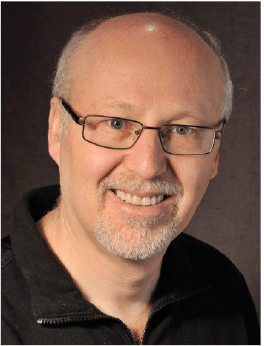By Marshall Chasin, AuD
The following post originally appeared in The Hearing Review and is republished here by permission.
 I am a black belt in karate and always spar or fight from my back leg. I am also 60 years old. I can easily take on a 7-year-old but at best, will typically only tie with a 20-year-old. At 60, there is no way that I am as fast as a 20-year-old. Neurologically, 20-year-olds have a great advantage- they can move more quickly and in more directions than I can, yet I rarely lose (I rarely win either). And this is because of how I compensate for my slowness.
I am a black belt in karate and always spar or fight from my back leg. I am also 60 years old. I can easily take on a 7-year-old but at best, will typically only tie with a 20-year-old. At 60, there is no way that I am as fast as a 20-year-old. Neurologically, 20-year-olds have a great advantage- they can move more quickly and in more directions than I can, yet I rarely lose (I rarely win either). And this is because of how I compensate for my slowness.
When someone spars in karate, balance is everything. A typical stance would be with your weight equally distributed on your front and back legs. To perform a kick off of your front leg, several things need to happen in a well-defined order: 1. Shift your weight to your back leg, 2. Lift your front knee as high as you can (both as a potential block and as a potential kick), and 3. Snap or thrust out your leg, hopefully scoring a point on your opponent.
Here is my strategy for not losing in karate sparring; I spar from my back leg. Since my weight is already on my back leg, I just need to perform the second and third things in a kick. It’s as if I have become much quicker than I really am. Of course, I try to disguise it so that I am not giving away anything.
Being pushed back on your back leg, or “balancing on your back leg” is sometimes used as a metaphor for being in a defensive position; you are trying to regain balance after having erred in some way, and it is anything but offensive.
IN AUDIOLOGY AS IN KARATE
After more than 35 years of practicing Audiology, I am starting to realize that we all spar from the back leg, with a semi-defensive attitude. When we are about to recommend hearing aids, warning signals go off in our heads: Will the price be too high for this person? Does this person actually need all of the features? My colleagues down the street have a 2-for-1 sale on. What can I offer my clients that another audiologist or hearing instrument specialist cannot?
All of these questions push us back on our rear leg as if we are off balance, and as if we feel that we have just erred in some manner. But taking this stance can actually be good for us as hearing health care professionals, and also for our clients.
Working in this competitive environment continually challenges us to do things that are outside our comfort zones, but ultimately good for everyone. The use of subjective assessment measures such as client benefit scales or scales designed to demonstrate the benefit of newer over older hearing aids is one such strategy. These are especially effective if used in conjunction with a verification of the hearing aid fitting. Other “defensive” items can be viewed as “value-added”- they may be financial (e.g., free battery program, or discount), technical (e.g., wireless assistive technologies), or counseling (e.g., easily readable information and well-designed clinic website).
“Defensive Audiology” is a term that best describes the current clinical reality. In the past we may have merely recommended hearing aid(s) with little or no afterthought. Of course, I am being a bit facetious, but the current economic, technical, and professional environment does demand that hearing aid recommendations and fittings be more of a two-way street than in our field’s olden days. Performing our clinical duties, balanced on our back leg, may be uncomfortable, but with practice it is a better way.






